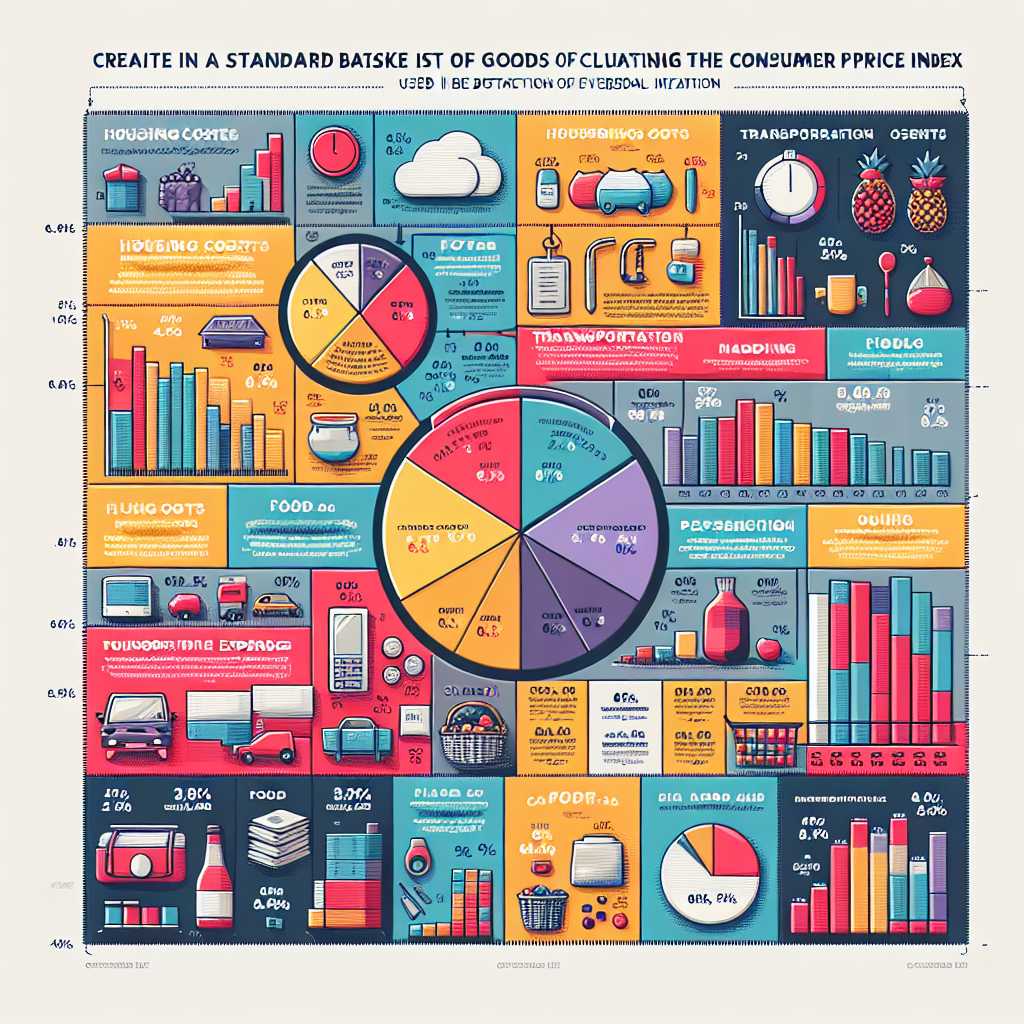Understanding the Consumer Price Index: An Essential Guide to Measuring Inflation
Introduction to the Consumer Price Index (CPI)
The Consumer Price Index (CPI) is a critical economic indicator that measures the average change over time in the prices paid by consumers for a basket of goods and services. It reflects the cost of living and is used by policymakers, economists, and the public to track inflation and guide economic decision-making. Understanding CPI is fundamental to grasping the dynamics of an economy and how they affect households and businesses.
How CPI Works
The CPI is calculated by taking price changes for each item in the predetermined basket of goods and averaging them. These items are weighted according to their importance in the spending patterns of households. To create a comprehensive index, agencies such as the Bureau of Labor Statistics (BLS) in the United States divide consumer expenditures into categories such as housing, food, transportation, medical care, education, apparel, and entertainment, among others.
Agencies collect thousands of prices from across a range of retailers and service providers every month. The CPI can be reported using different base years for comparing prices or can be presented as a chained series to account for changes in consumption patterns over time and provide a more accurate reflection of current consumer expenses.
Types of CPI Measurements
The CPI comes in various forms to measure different aspects and impacts on the economy:
-CPI for All Urban Consumers (CPI-U):
This measurement covers approximately 87% of the population in the United States, representing the spending patterns of urban consumers.
-CPI for Urban Wage Earners and Clerical Workers (CPI-W):
A subset of the CPI-U, this index focuses on households with more than one-half of income coming from clerical or wage-paying jobs.
-Core CPI:
Sometimes volatile items like energy and food prices are excluded to derive what is known as Core CPI because these prices can be prone to sharp and transient price swings.
Interpreting CPI Data
Understanding CPI figures helps businesses adjust prices and wages and aids governments and central banks in crafting fiscal and monetary policies. An increasing CPI means prices are generally rising—indicative of inflation—while a decreasing CPI column suggests deflation, or a general drop in price levels.
Utilizing CPI for Cost-of-Living Adjustments
One of the most direct applications of CPI is its use for Cost-of-Living Adjustments (COLAs). Pension schemes, social security benefits, tax brackets, government salaries, and rents in some markets are often indexed to CPI directly. This practice ensures that payments rise with increases in cost-of-living so that individuals’ purchasing power doesn’t erode due to inflation.
Impact of Inflation on Different Stakeholders
-Consumers:
When faced with inflation, consumers may find their purchasing power reduced if their income doesn’t increase at pace with price increases. People on fixed incomes or savings are particularly vulnerable as their money buys less over time.
-Businesses:
Companies must adapt to changing costs, potentially increasing prices or finding efficiencies to maintain profit margins. High inflation can lead to uncertainty around pricing and investment strategies, possibly leading to slower economic growth.
-Governors & Policymakers:
Sustained change in CPI’s movements influences fiscal policies including tax rates and government spending deliberations. Monetary policies such as interest rates adjustments also hinge on expected movements of the CPI.
Fluctuations in CPI and Economic Health
Rapidly increasing CPI may lead to hyperinflation, eroding trust in currency and hindering economic transactions. In contrast, deflation can lead to decreased consumer spending as people anticipate lower future prices, potentially causing an economic slowdown or recession.
Challenges in Measuring CPI Accurately
One challenge facing consumer price analysts is ensuring that changes in quality or new technology are properly accounted for so that true price increases are reflected rather than enhancements in quality or capability.
Another challenge is capturing online prices and the growing digital economy which traditional means may overlook. Furthermore, agency choices around basket contents often face scrutiny whether they accurately reflect actual consumer expenditure patterns.
